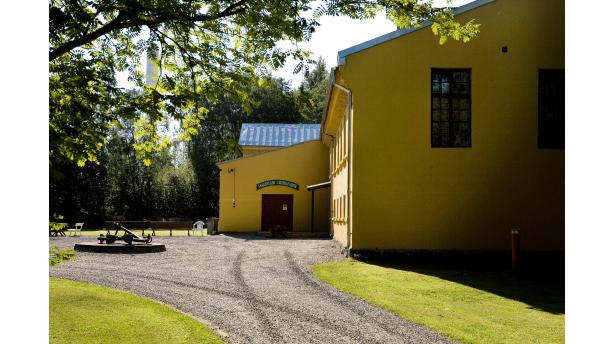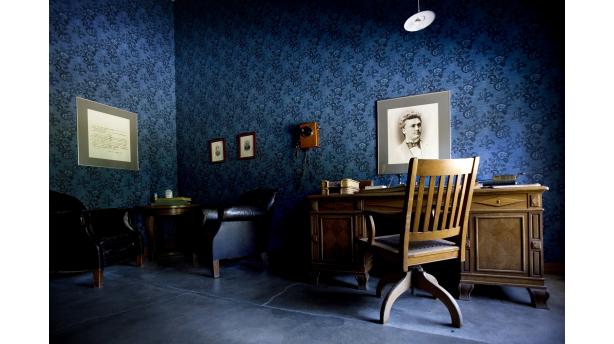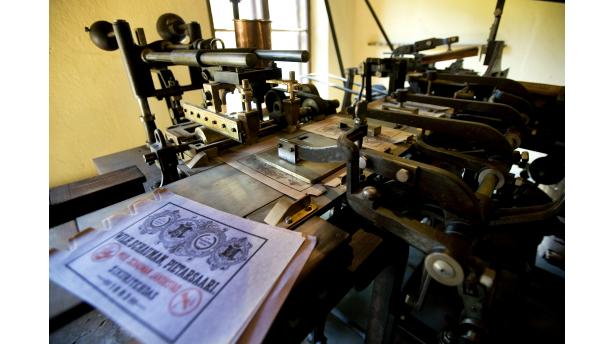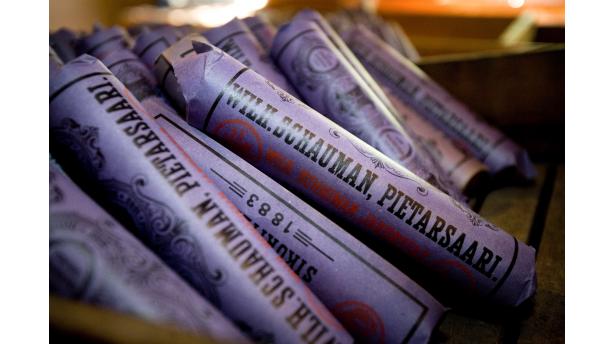Chicory is a perennial wild plant, which can reach the height of one metre. It has blue flowers and a strong root, which is used in producing coffee substitute by roasting, grinding and steaming.
Museum A-Ö » Chicory Museum
Chicory Museum




Did you know...
Chicory is a perennial wild plant, which can reach the height of one metre. It has blue flowers and a strong root, which is used in producing coffee substitute by roasting, grinding and steam ...
The Chicory Museum is closed.
The Chicory Museum is a uniquely preserved factory milieu in Ahlholmen, Jakobstad. Here the visitor gets a feel of the old time factory work and can become familiar with the production of coffee substitute chicory. In connection with the museum tour the visitors are served modern chicory coffee. During the summer one can also enjoy art exhibitions and other events in the museum.
Counsellor Wilhelm Schauman started the production of chicory in 1883 in a small baking cabin in the centre of Jakobstad. The demand for chicory was big at the end of the 19th century, therefore Schauman soon began to expand the activity and constructed a factory in Jakobstad. There were competing chicory factories for instance in Tampere, but Schauman’s factory grew in a matter of few years into the biggest manufacturer of chicory producing 2/3 of Finland’s chicory. The factory was destroyed by a fire in 1892, but already during the same autumn a new factory was being constructed in the proximity of the Ahlholmen harbour. It had an ideal location, as the raw material, root of chicory, was imported by sea mainly from the Netherlands.
The products were sold all over Finland. The factory was at its greatest in 1903, when the 60 employees working there produced 1 400 tons of chicory. The factory usually operated for part of the year and many of the workers were farmers from Larsmo, men as well as women. The people and the atmosphere of the factory have been captured on the museum’s photographs.
Most of the factory’s old machines have been preserved. The chicory was roasted in biphasic roasting ovens, that still remain in the roasting room. The chicory was ground and packed in cones with the help of cone machines. In order to achieve the right colour and flavour the chicory cones were stored for two days in a humid steam room, where the temperature was 60 degrees. After that they were packed into boxes to be shipped to different parts of Finland and even to Russia. The box machine still functions. Some of the original cone wrappings also survive.
Schauman’s success was partly based on the elegant packages and skillful marketing with for instance chicory-themed comics.
In the 1950s the age of chicory was over. There were attempts to find new products to replace it in the factory, and the production of for instance roasted salt peanuts began. The roasted salt peanuts were, however, not profitable; a similar thing happened in the 1960s-1980s with chipboards and wood wool. The manufacturing of wood wool ended in 1980.
One of the steam rooms in the museum has been restored as an art gallery, where art exhibitions are organized. The museum and its courtyard have also attracted playhouses and concerts to the site. During Jakob’s Days in July a Chicory Sunday is arranged at the museum with song, poetry and other programme.



